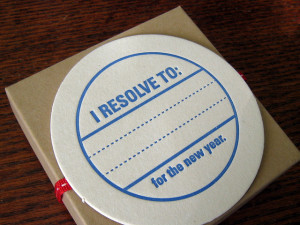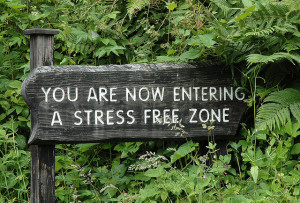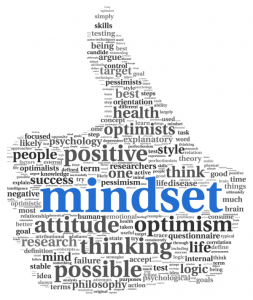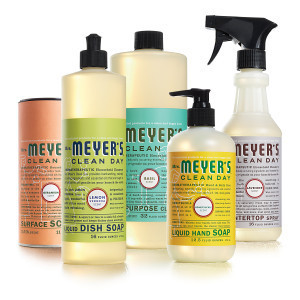Molly Fletcher's Blog, page 25
January 5, 2015
10 Inspirational Speakers Worth Following on Twitter
Are 140 characters enough for an inspirational message? That’s a big challenge that these ten inspirational speakers conquer. (I’m listing them in alphabetical order because it’s hard to rank them.) They’re on my Twitter feed and I highly recommend them as worth following.
enough for an inspirational message? That’s a big challenge that these ten inspirational speakers conquer. (I’m listing them in alphabetical order because it’s hard to rank them.) They’re on my Twitter feed and I highly recommend them as worth following.
1. Azure Antoinette (@AzureAntoinette)
Be brilliant, because everything else is ordinary. This is a gem from Azure, who I met in fall 2014 as a fellow keynote speaker at the Quad Cities Women’s Leadership Conference sponsored by Merrill Lynch. A spoken word artist, she is known as the millennial Maya Angelou, and her message is to “ignite your dream.”
2. Deepak Chopra (@DeepakChopra)
Full awakening is knowledge of your true nature, which is the ultimate truth. Chopra’s profile picture has two words marked on his cheek: Infinite Possibilities. His new book explores the reinvigoration of faith in God and spiritual belief in the age of skepticism.
3. Amy Cuddy (@amyjccuddy)
The less self-focused we are, the better we are at being ourselves. She heralded the connection between confidence and body language, and how we follow our dreams through our posture.
4. Kevin Eastman (@kevineastman)
I hear lots of people talk about being locked in. To me that’s an intense focus on “right now.” He’s rooted in pro basketball, but his knowledge relates to teams, leadership and succeeding together.
5. Elizabeth Gilbert (@GilbertLiz)
I was not rescued by a prince; I was the administrator of my own rescue. The author of Eat, Pray, Love and the new novel The Signature of All Things fills her Twitter feed with humor and insight.
6. Arianna Huffington (@ariannahuff)
Living in a state of gratitude is the gateway to grace. The online publisher cherry-picks amazing reads and quotes that will get you to think and live more intentionally.
7. Kid President (@iamkidpresident)
Hang in there. Unless there is boring. Go be you somewhere awesome. How about inspiration from Robby, a kid who is funny as heck, who as a family project is making the world a place where everyone is someone special?
8. Tony Robbins (@tonyrobbins)
The difference between success and failure isn’t talent, it’s hunger. He’s been motivating people for so long, and Twitter gives him an immediate platform for inspiring 2.5 million followers.
9. Simon Sinek (@simonsinek)
We can make up for lost money but we can’t make up for lost time. As an ethnographer, Sinek studies people and cultures, and shares what he knows through hugely popular TED talks like one about how to restore the human in humanity.
10. Oprah Winfrey (@oprah)
I love that friendship is a spiritual practice, don’t you? She’s the queen storyteller and story gatherer, tweeting content that helps her followers survive and thrive.
The takeaway
If you follow me on Twitter, you see my retweets of inspirational messages from these ten speakers. They help inspire me to keep inspiring others, and I believe they will keep you motivated and believing as you strive to your goals. If you know of an inspirational speaker not on my list who is worth following on Twitter, please tweet me!
Molly Fletcher helps inspire and equip game changers to lead well and with purpose. Her book, “ A Winner’s Guide to Negotiating: How Conversation Gets Deals Done ” (McGraw-Hill, 2014), draws on her decades as a sports agent and negotiator on behalf of pro athletes, coaches and broadcasters. Follow Molly on Twitter @MollyFletcher.
December 29, 2014
Where Are You Stuck? Three Personal Development Tips For New Year’s Resolutions That Work

Flickr: BazaarBizarreSF
Game changers are people who love making goals because they love reaching goals, and the hard work required to get from start to finish. Setting and keeping a New Year’s resolution is a tricky goal because so many of us lack the foresight and/or commitment to stick with it. That’s why a whopping 92 percent of us fail to keep going on these type of promises. Too often, New Year’s resolutions are more obligation than aspiration.
Here are my best three personal development tips for New Year’s resolutions that work.
1. Start when you see the need, not necessarily on January 1st.
I always love all the new faces in the gym in January, and I pray that I still see them in April (or February for that matter). If there is something in your life you want to shift, why wait for an arbitrary date such as New Year’s? That single day in our culture shouldn’t own the right of starting the change you wish to see.
Given that I’m writing this right before January 1st, this may sound like advice to procrastinate. It’s not. The message is like Nike’s: Just do it. As a sports agent, I saw the power of this over and over. When a pro golfer like Matt Kuchar needed to make a change to his swing, he did it then. Same for a coach needing to make changes to a team.
The best time doesn’t have to be Jan. 1. The best time is when you identify the need.
2. Document your specific, visual goal in the present tense.
To make a vibrant, energizing goal, think visually. What do I want my life to look like at the end of 2015? Or at the end of 2020? Or even further into the future?
Make your answers present tense and a complete sentence. “At the end of 2015, I weigh x pounds.” “My net worth is up $150,000 from a year ago.” “I attended religious services twice a week in 2015.”
Specific, visual sentences like these serve as the compass to guide you to success.
3. Recruit an accountability partner.
Who is going to support you on this journey? Someone who asks, “How are you doing today?” is worthless. An effective partner/coach will keep asking questions—the hard ones you need to hear to maintain your quest.
They will be insistent. If you’re serious about dropping pounds, you will want someone who is unafraid to consistently ask questions like, “What do you weigh today?”
They will ask for specific details (like where and when and how much). Progress is measurable.
They will ask for documentation. Photos (like the scale reading that shows how much weight you’ve lost) or it didn’t happen.
The takeaway
Personal development requires support. The three tips shared in this blog are a way to help you get going and keep going on your quest for the insight and instruction to create your own blueprint for getting the most out of your talent and time. Starting when you see the need, documenting your goal in the present tense and recruiting an accountability partner are three tips that have helped me achieve important personal change. Let me know how they work for you.
Molly Fletcher helps inspire and equip game changers for leading well and with purpose. Her recent book, “ A Winner’s Guide to Negotiating: How Conversation Gets Deals Done ” (McGraw-Hill, 2014), draws on her decades as a sports agent and negotiator on behalf of pro athletes, coaches and broadcasters. Follow Molly on Twitter @MollyFletcher.
December 22, 2014
Managing Stress: 3 Ways for the Holidays and Beyond

Photo Credit: Flickr/Thornypup
The holidays can be brutal for those of us who are looking for a way to pull the most of our hours, for our greatest productivity. I’m the last person you would call a Grinch, but this time of year can test my limits. There are way too many events, deadlines and expectations to fit into each 24 hours.
This makes the holidays a great teacher of an important lesson in managing our time and energy: Less is more.
Stay centered
I had a holiday party I declined to attend a few nights ago, as I looked at my schedule I realized that I just didn’t have my best level of energy to give to that event. Saying no can be hard, and for many of us, guilt-inducing. There’s a real fear of missing out.
But saying no opens up other possibilities that can restore energy, not consume it. When I said no to that holiday party, I stayed home, played holiday music, wrapped gifts with my daughters, and grilled out. We built a big fire and the change of pace helped me refill my tank (and those most important to me).
This is so important! Making time for renewing ourselves, for caring and respecting and improving who we are, isn’t a copout. It’s a strategic investment. In the “Seven Habits of Highly Successful People,” Stephen R. Covey called this habit “sharpening the saw.” He advocates (and this makes so much sense) for balancing the physical, mental, spiritual, and social/emotional spheres of life. When one takes over, the whole person suffers.
That night off did wonders for my energy level and filled my “family time tank.” I love holiday gatherings, but only when I can refill my energy tank by sharing with the ones I love most.
Stay true to rituals
We’ve talked before about how important it is to know your why and to hold onto it. This time of year, sometimes the expectations of traditions—gift planning and shopping, holiday cards, events and obligations—cause more stress than joy. It can be hard to refocus on why you’re doing all this to begin with.
This is where a keystone habit really can help. For me, holiday stress is handled much more easily when I stay true to my early morning ritual routine: coffee, a big glass of lemon water, focusing on gratitude, and contemplating specific actions to support the people I love most.
Stay active
Get in daily exercise if you can, of any length and intensity. This can seem counterintuitive to the person who decides not to exercise because of the perception that fatigue will follow. Physical activity, more than almost anything else, keeps me sane during times of great stress. It erases any negative thinking and brings clarity to my perceptions and decisions.
One of my favorite books on managing stress is “The Power of Full Engagement: Managing Energy, Not Time, Is the Key to High Performance and Personal Renewal,” by Jim Loehr. It was published in 2005, but its observations are timeless, especially its emphasis on our physical connection to our work and goals. I love this definition:
“To be fully engaged, we must be physically energized, emotionally connected, mentally focused and spiritually aligned with a purpose beyond our immediate self-interest. Full engagement begins with feeling eager to get to work in the morning, equally happy to return home in the evening and capable of setting clear boundaries between the two. It means being able to immerse yourself in the mission you are on, whether that is grappling with a creative challenge at work, managing a group of people on a project, spending time with loved ones or simply having fun. Full engagement implies a fundamental shift in the way we live our lives.”
For me, that engagement is fueled through physical fitness. If you’re missing that level of connection, trying a consistent commitment to working out. Even short spurts of walking and stretching can help you stay sharp during the holidays.
The takeaway
More isn’t better. Lots of people with “more” are miserable. The holidays present us with such a smorgasbord of traditions and expectations that few people can meet. If you’re looking at that and feeling stressed, practice a great new habit: Focus on what is essential for you and remove the rest.
Staying grounded, true to rituals and physically active are three key ways to managing stress and energy levels during the holidays and all year round.
Molly Fletcher helps inspire and equip game changers to lead well and with purpose. Her recent book, “ A Winner’s Guide to Negotiating: How Conversation Gets Deals Done ” (McGraw-Hill, 2014), draws on her decades as a sports agent and negotiator on behalf of pro athletes, coaches and broadcasters. Follow Molly on Twitter @MollyFletcher.
December 18, 2014
The Best Blogs of 2014

Photo Credit: Javier Domínguez Ferreiro
As 2014 draws to a close, we take a look back at our best blogs of 2014. From inspirational speeches to negotiating tips to leadership lessons, enjoy our six most popular blogs from the past year. It’s a joy to share my blog with you each week and I am grateful for all of you who follow along. If you have ideas for topics, please tweet me @MollyFletcher.
Now onto the best blogs of 2014… Enjoy!
1. My 5 Favorite Inspirational Speeches from TED
The vision behind TED is “Ideas Worth Spreading” and these five TED Talks offer fresh perspectives that invite further reflection.
2. 5 Core Values Behind Pat Summitt’s Legendary Leadership
In her autobiography, Sum It Up, legendary basketball coach Pat Summitt gives her reader a glimpse into the values upon which she built her success. These were my favorite takeaways from a coaching legend that will resonate with anyone in a leadership role.
3. Flying the Chaotic Skies: The Power of Pause
In the midst of a cross-country travel nightmare, I received an unexpected and much needed reminder on the power of the pause. Re-gain perspective by embracing the pause.
4. Women Negotiating: What Makes Michele Roberts So Good
Michele Roberts may have made waves because of her gender (she’s the first female executive director of the National Basketball Players Association), but she’s well suited for the job. Here’s what women (and all of us) can learn about negotiating from Roberts.
5. Use these Communication Exercises to Deliver a Message that “Sticks”
It’s hard to cut through the clutter. Taking a page from the Heath Brothers, learn how to deliver a message that not just gets your point across but “sticks.”
6. My 5 Favorite Personal Development Books
Get the most out of your talent and your time with these five books aimed at personal development.
Molly Fletcher helps inspire and equip game changers with the negotiation tactics for leading well and with purpose. Her recent book, “A Winner’s Guide to Negotiating: How Conversation Gets Deals Done” (McGraw-Hill, 2014), draws on her decades as a sports agent and negotiator on behalf of pro athletes, coaches and broadcasters. Follow Molly on Twitter @MollyFletcher .
December 15, 2014
Six Best Books to Make Seasonal Giving (and 2015) Even Better

Photo Credit: Kevin Morris
This time of year, most of us have more down time for ourselves, for reading and introspection. A great book can fulfill an obligation (gift giving) and offer preparation (a new year is around the corner). In this time of looking forward to new goals, challenging old habits and unleashing your greatest potential, here are six books that can make seasonal giving and 2015 even better.
Again and again, this novel resonates universally with audiences around the world. Coelho’s fable tells the tale of a shepherd boy who travels the world in search of treasure and instead finds his destiny. It’s about resilience and faith both inside its pages and in its publication history. The publisher dropped it initially because it didn’t sell, but now The Alchemist has sold over 65 million copies and stayed on the New York Times bestseller list for more than 300 weeks. The book is a powerful reminder of the transformative power of our dreams.
Eleven Rings: The Soul of Success
Phil Jackson, one of the greatest coaches in basketball history, offers unconventional leadership wisdom that applies to any competitive arena. His holistic approach to leadership is based on many diverse influences. I love his focus on mindfulness and how transforming a group of young, driven, gifted athletes into champions requires “an open heart, a clear mind and a deep curiosity about the ways of the human spirit.” Read this and know why and how he won 11 championships. If you enjoy it, also read his Sacred Hoops.
Essentialism: The Disciplined Pursuit of Less
Greg McKeown blogs for the Harvard Business Review and researches why people and teams thrive (or not). This book is chock full of techniques on how to determine the important from the trivial, get at what’s essential and limit what’s not. One brilliant aspect: this book is organized around a series of verbs, which reinforce that change only happens with concrete action executed consistently until becoming effortless.
Subtitled “Achieving Success at Work and in Life One Conversation at a Time,” this book by Susan Scott has remained relevant since its release in 2004. Difficult conversations take courage, and if we dare, these can transform our lives. In the business world, a fierce conversationalist is a fearless leader. Scott offers an essential guidebook for any scenario: one-on-one, bringing an issue to the table in a team environment, conflict resolution, etc. Action items help you make these principles your own.
This is a short (less than 200 pages) book on a simple principle: 20 percent of what we do is important; the rest is trivial. How do we use the 80/20 economic principle to work less, worry less, succeed more, enjoy more? Author Richard Koch offers many exercises to work through applying this concept to real life situations.
Authors Daniel Goleman, Richard Boyatzis and Annie McKee coined the phrase “emotional intelligence” and built a case for the power and necessity for leadership rooted in openness, empathy, self-awareness and collaboration. These soft skills are even more important as our work lives become more wired. This is a book about how the best leaders motivate through understanding and harnessing emotions, to bring out the best in their teams.
The takeaway
The holidays can be the perfect time to create that blueprint for getting the most out of your talent and time. Why not pick up a new book to help you, or someone on your gift list, explore your untapped potential?
Molly Fletcher helps inspire and equip game changers with the negotiation tactics for leading well and with purpose. Her recent book, “ A Winner’s Guide to Negotiating: How Conversation Gets Deals Done ” (McGraw-Hill, 2014), draws on her decades as a sports agent and negotiator on behalf of pro athletes, coaches and broadcasters. Contact Molly here.
December 11, 2014
Erase these Seven Toxic Words with a Growth Mindset

Those seven words are an incredibly toxic sentence often passed down at critical moments in our personal growth.
So often we are told, even as kids, that if we aren’t naturally talented, we shouldn’t bother trying to get better. “You either have it or you don’t” are the seven deadly words that describe a fixed mindset. It’s also expressed with statements like “We’ve always done it this way” or “I’m really not much of a _____ person.”
The fixed mindset pigeonholes a person by what he or she is good at, and only by that. It’s labeling to control people and outcomes. It avoids challenges, gives up easily, sees effort as worthless, ignores constructive criticism and breeds the insecurity that leads to feeling threatened by others’ success. The fixed mindset is pressured by expectations that performance must match talent, and limited by a sense of entitlement.
The worst part about it may be that so often, we do it to ourselves.
That’s why I’m so drawn to the opposite way of thinking: the growth mindset.
The growth mindset is based in a desire to learn. It embraces challenges, persists despite obstacles, thinks of effort as a means to mastery, and welcomes the chance to learn from criticism. A person with this mindset views others’ success as a window into lessons and inspiration for even greater personal success, fueled by the power of free will (not expectation).
A great description of this thinking and example of its power can be found at Khan Academy, the online library of free educational videos accessed by nearly 21 million viewers:
“Most people are held back not by their innate ability, but by their mindset. They think intelligence is fixed, but it isn’t. Your brain is like a muscle. The more you use it and struggle, the more it grows. New research shows we can take control of our ability to learn. We can all become better learners. We just need to build our brains in the right way.”
Let’s talk about three concrete ways to build this mindset and why these will benefit you.
Positive self-talk. A mindset is like software: it runs on a script. So if you want to change your performance, you have to change the script running inside your head. There has to be new words to replace, “You either have it or you don’t.”
The new script for a growth mindset says, “You have the ability to make yourself into anything you want. Your inborn talent is important, but how much you work is even more important.”
This new script does not impose a cap on your performance or cultivate a sense of entitlement (if you “have it,” then you naturally must be better than those who don’t, right?) Instead, you’re issuing yourself a challenge to do the work only you can do, using the unique talents inside yourself.
Positive habits. A recent New Yorker article, “Better All the Time,” pointed out that the growth mindset and the performance industry has created “the mainstreaming of excellent habits.” If greater success and performance s possible with hard work, then the more consistent and targeted the work, the more growth can be expected.
This is why we see expansion of the teams of specialists who help high-level performers “focus more intently on those small details which cumulatively add up to better performance.” The key words there are cumulatively add up. Small actions repeated over time create the critical mass for better outcomes.
Positive feedback. We live with big data all around us, delivered via technology that measures how you are doing compared to yesterday, last week, last year, your competition, but most of all yourself. There is no substitute for hard numbers to rank performance, and it widens the gulf between a growth mindset and the abstract “you either have it or you don’t” thinking. An example from the New Yorker article:
“Chris Hoy, the British cyclist who won two gold medals at the London Olympics in 2012, [was] trailed by a team of scientists, nutritionists, and engineers. Hoy ate a carefully designed diet of 5,000 calories a day. His daily workouts—two hours of lifting in the morning, three hours in the velodrome in the afternoon, and an easy one-hour recovery ride in the evening—had been crafted to maximize both his explosive power and his endurance. He had practiced in wind tunnels at the University of Southampton. He had worn biofeedback sensors that delivered exact data to his trainers about how his body was responding to practice. The $80,000 carbon-fiber bike he rode helped, too. Hoy was the ultimate product of an elaborate and finely tuned system designed to create the best cyclist possible. And—since his competitors weren’t slacking, either—he still won by only a fraction of a second.”
Researchers are finding that the best aren’t getting even better; as the magazine article points out, more people (like Hoy) are becoming extraordinarily good. This trend is only possible with a growth mindset that allows for a larger, deeper pool of potential within each of us, even those without a surplus of natural talent.
The takeaway
Success and growth depends on relationships, including your relationship to your own beliefs and talents. A growth mindset frames your potential for maximum performance. Success does not depend on whether “you either have it or you don’t.” It’s about how hard you are willing to work consistently and adapting to performance feedback. A fixed mindset looks back, rejecting the dynamic potential of hard work. Get rid of the thinking that holds you back. A growth mindset erases those seven deadly words.
Molly Fletcher helps inspire and equip game changers with the negotiation tactics for leading well and with purpose. Her recent book, “ A Winner’s Guide to Negotiating: How Conversation Gets Deals Done ” (McGraw-Hill, 2014), draws on her decades as a sports agent and negotiator on behalf of pro athletes, coaches and broadcasters. Follow Molly on Twitter @MollyFletcher .
December 8, 2014
Molly’s Favorite Things 2014
Looking for gift ideas this holiday season? Each year, I take a page from Oprah and pick out some of my favorite gifts for the season. What are your “favorite things” this year? Share them in the Comments section.
TopGolf
Get ready to tee off!  For the golfer or wannabe golfer in your life, check out TopGolf, a chain of entertainment golf centers in select cities. This new kind of golf experience combines competition, entertainment and a social scene that appeals to golf enthusiasts and beyond. Their convenient e-card gift certificates allow you to personalize your message, design and even add a photo.
For the golfer or wannabe golfer in your life, check out TopGolf, a chain of entertainment golf centers in select cities. This new kind of golf experience combines competition, entertainment and a social scene that appeals to golf enthusiasts and beyond. Their convenient e-card gift certificates allow you to personalize your message, design and even add a photo.
Ugg Slippers
I’m a Michigan girl at heart, but after living in Atlanta, I’m not sure I know how to handle a real winter anymore! These Ugg slippers are the perfect wintertime gift. I have the Dakota version and they are the warmest, most comfortable pair of slippers ever. I love all their style and color options. And don’t worry, men they’ve got you covered too. If Tom Brady can pull them off, so can you… right?
girl at heart, but after living in Atlanta, I’m not sure I know how to handle a real winter anymore! These Ugg slippers are the perfect wintertime gift. I have the Dakota version and they are the warmest, most comfortable pair of slippers ever. I love all their style and color options. And don’t worry, men they’ve got you covered too. If Tom Brady can pull them off, so can you… right?
Tiffany perfume

This classic line is my favorite, go-to brand of perfume. I’ve been wearing it for years. Christmas is always my time to re-stock.
The Gift of Learning
One of my favorite  gift ideas is to give the gift of learning. Whether it’s tickets to an upcoming conference (think Oprah’s Life You Want Tour) or gifting an online course, this is a unique gift that will leave a lasting impact. Here’s an example— one of my favorites, Brene Brown, recently teamed up with Oprah’s Life Class for an art journaling e-course based on her book The Gifts of Imperfection. Follow your favorite thought leaders and see what they have planned, then surprise the recipient with tickets or membership!
gift ideas is to give the gift of learning. Whether it’s tickets to an upcoming conference (think Oprah’s Life You Want Tour) or gifting an online course, this is a unique gift that will leave a lasting impact. Here’s an example— one of my favorites, Brene Brown, recently teamed up with Oprah’s Life Class for an art journaling e-course based on her book The Gifts of Imperfection. Follow your favorite thought leaders and see what they have planned, then surprise the recipient with tickets or membership!
Mrs. Meyer’s Clean Day

For the person on your list who wants a practical gift, give them the gift of a clean and happy home. I love this product line, which is all earth-friendly and not tested on animals. My favorite scent is the Lavendar, but you can choose your favorite gift set or choose a holiday seasonal selection.
The Gift of Health

We all need that extra kick sometimes to get motivated to take care of ourselves. Mixing up your routine can be a great way to stay engaged and motivated. There are so many different offerings that you can find the perfect class for anyone. Personally, I’ve added in SPX training, which is a workout similar to Pilates that encompasses both cardio elements and strength training. Look up classes in your area and find the perfect gift to kick start a healthy year.
Tony Chachere’s Creole Seasoning
Makes for a good  stocking stuffer! My husband grew up in Louisiana and this is definitely his influence. He introduced me to this Creole seasoning years ago and it’s become a staple in our kitchen. It goes on everything! I use it with ground sirloin, ground beef and chicken. Use it to spice up any meal.
stocking stuffer! My husband grew up in Louisiana and this is definitely his influence. He introduced me to this Creole seasoning years ago and it’s become a staple in our kitchen. It goes on everything! I use it with ground sirloin, ground beef and chicken. Use it to spice up any meal.
Molly Fletcher helps inspire and equip game changers with the negotiation tactics for leading well and with purpose. Her recent book, “
A Winner’s Guide to Negotiating: How Conversation Gets Deals Done
” (McGraw-Hill, 2014), draws on her decades as a sports agent and negotiator on behalf of pro athletes, coaches and broadcasters. Follow Molly on Twitter @MollyFletcher.
December 1, 2014
Use These Communication Exercises to Deliver a Message That “Sticks”

Photo Credit: Pekka Nikrus
I grew up competing with my older brothers, sometimes working hard to just get a word in. If you’re working in a highly competitive world, it’s hard to get a message to stick. How do you get your audience to understand, retain and act on what you have to say?
Some great exercises for communicating messages that stick come from two other brothers: Chip and Dan Heath, authors of a great book, “Made to Stick: Why Some Ideas Survive and Others Die.”
The Heath brothers break down the elements of a sticky message, and you can use these attributes to make sure your message resonates, too. I do a lot of motivational speaking, and as I prepare, I often test my speeches against this list. You don’t need all of these elements, but the more you have, the more moving your speech will be.
Communication Exercises: What’s the secret?
Acronyms can help you get to stickiness, and so the Heaths used the letters in “success” to represent their communication model.
S – Simple. The hardest thing to do is to pare down you point to a single sentence or priority. It’s incredibly hard work to get to the essence of what you are trying to say. The result is similar to a great athletic performance: you see someone make an incredible play, and it looks effortless. That’s simplicity in action.
U – Unexpected. People tune out when they have heard it before. This is where, for me, humor is so important. Audiences love to laugh, but they don’t get to that often, especially not in a sales meeting or trade conference. Why not? Give your audience an unexpected connection to your content. The Heaths talk about creating “curiosity gaps” that make people want to find out more. A sticky message needs an audience that is motivated.
C – Concrete. People have different types of memories, so it’s important to try to tap into these pipelines with a varied set of tools. Concrete means that your message has a lot of sensory descriptions—sights, sounds, smells, tastes, touch—that help engage listeners. The right words to a receptive listener create a strong bond, like the hooks and loops of Velcro.
C – Credible. You must know your audience. What do your listeners care about? Worry about? Look forward to? This information helps you step out of your world and into theirs. Anticipate questions. Don’t assume that people will take your word as authoritative; you must give them the opportunity to engage with credible, trustworthy information in a non-threatening, encouraging manner.
E – Emotional. “People care about people, not numbers,” the Heaths point out. We know one another through our emotions, and we turn away from a person whose emotions seem fake or forced. Authentic emotions are so important in delivering a message that endures.
I think about how Chuck Pagano gave such a great locker room speech to the Indianapolis Colts: He targeted their core identity as a team, empowering them to look for the positives in every challenge. He showed them how he was doing the same thing in his personal life. He showed them how a detailed vision, grounded in a strong value like family milestones, can be their engine. In just a few sentences, he made every player on his team feel like his own family, and know that he believed in them like he believed in himself.
S – Stories. No great message ever sticks without anecdotes. A great storyteller helps us relive that feeling of being enthralled by a story, when we listened on the edge of our seats to find out what happened next. Stories allow conference speakers to communicate complex ideas, information, and data in the form of entertainment.
S – The final “s” signals the idea that employing more than one of these elements will help your message stick even more. My final S is Summons. I want to leave my audience with a challenge to pursue, something they can work toward, based on my message.
The takeaway
Sticky messages change people. They get excited. They take action. Check out the Heath Brothers publications for more information on their model.
I’ll keep looking for the most relevant exercises to communicate messages that stick, and if you have one that works, I would love to hear from you.
Molly Fletcher helps inspire and equip game changers with the negotiation tactics for leading well and with purpose. Her recent book, “ A Winner’s Guide to Negotiating: How Conversation Gets Deals Done ” (McGraw-Hill, 2014), draws on her decades as a sports agent and negotiator on behalf of pro athletes, coaches and broadcasters. Follow Molly on Twitter @MollyFletcher.
November 24, 2014
Authentic Gratitude is a Favor to Yourself

Photo Credit: Flickr
Everyone likes favors, especially when they are done for us. Building a “favor column” by giving to others is a powerful tool in business relationships.
One of the most powerful favors you can do for yourself is expressing authentic gratitude.
Yes, that sounds counter-intuitive especially during this season of Thanksgiving. Isn’t saying thanks a gift to the other person?
Think again. Authentic gratitude is a deep benefit to everyone involved.
Our brains on gratitude
When we say thanks, we program our brain to see positive change, according to experts who study gratitude and its effect on our ability to survive and thrive.
“When we intentionally and steadily cultivate a practice of gratitude for the people and processes that sustain our life, we expand our perception of our experience back out of a narrow, contracted, survival mode… to a more expansive, more optimistic perspective, where we can again discern options and possibilities,” said Linda Graham, author of Bouncing Back: Rewiring Your Brain for Maximum Resilience and Well-Being. “Resilience is a reliably measurable outcome of cultivating positive emotions such as gratitude.”
Making it easy
The pursuit of gratitude has triggered a market of accessories, such as apps like Gratitude365 and Gratitude Journal (“Write down 5 things you’re grateful for each day and change your life forever”). These make it easy to incorporate gratitude into your daily life.
Thanksgiving provides a spark for other online resources such as:
Infographics like Tommy Newberry’s My Thanksgiving Binge gratitude drill.
Even more gratitude challenges on Facebook, an easy way to build and inspire the gratitude habit.
These creative ways to cultivate gratitude at work.
Another 22 gratitude exercises to consider.
Making it authentic
When life hits warp speed, your best gratitude move might be a simple text “ty.”
What I call Authentic Gratitude takes a little more effort, and it hinges on one word: because.
When you follow an expression of gratitude with because, you are forced to go deeper to connect your values to the object of your gratitude.
I’m thankful for my family because they support me no matter where I am in my journey and I know they will always have my back.
I’m thankful for audiences across the country who listen and help me understand what inspires them so I can better equip them to become game changers wherever they are. Because of them, I am inspired to keep growing and pushing myself.
I’m thankful for you because you read my blog and give me feedback on what my work means to you.
Specificity and vulnerability make an expression of gratitude more meaningful to the person who communicates it, and to the person who receives it. That’s authentic gratitude.
The takeaway
When you focus on authentic gratitude, you connect with what is most precious to you and how that is revealed in the world around you. The word “because” is a powerful link to specific values that drive you and connect to others.
Authentic gratitude is powerful way to reinforce your why. For all these reasons, the practice of authentic gratitude is just as beneficial to you as it is to the receiver. Maybe more.
Molly Fletcher helps inspire and equip game changers with the negotiation tactics for leading well and with purpose. Her recent book, “ A Winner’s Guide to Negotiating: How Conversation Gets Deals Done ” (McGraw-Hill, 2014), draws on her decades as a sports agent and negotiator on behalf of pro athletes, coaches and broadcasters. To subscribe to our newsletter, click here .
November 18, 2014
Girls Grasp Negotiation Tactics When We Show Them How

Photo Credit: K&R Negotiations
I’ve always treasured time with my three girls, especially knowing that in our society, daughters can have a hard time claiming their own unique voices to ask for what they need and want. It’s hard for any of us to know ourselves well enough to have that level of confidence. But it’s so important because fair pay and career advancement are at stake.
As Strong Female Lead columnist Gwen Moran pointed out recently in Fast Company: “What if we raised girls to help them both master negotiation skills and navigate the challenges? Would that help us raise a generation of women who are more likely to succeed by the time they need to ask for what they’re worth?”
My daughters are 10 (twins) and 11, and a recent trip to the home improvement store with Emma (the oldest) illustrates one way to model negotiation tactics. As any parent knows, kids are watching and studying your every move, so leading by example is the best way to make your point. Maybe the only way!
The Cotton Gin Project
Emma had to build a cotton gin for her social studies class. I agreed to help the weekend before it was due. This involved drilling a hole in a piece of wood so the handle could spin the cotton. We hit a snag when we couldn’t find the charger for our cordless drill.
On 7:30 am the day before Emma’s project was due, we headed to Lowe’s to get a charger. It’s a big store and sometimes it can be hard to find the right assistance, but by asking around, we located the store’s “tool guy,” Jeff.
“You have to order the charger, and it will take a few days,” Jeff said. “It’ll be about 25 bucks plus shipping.”
You don’t need to be smarter than a fifth grader to do this math. Replacing our drill would cost $35.
The ticking of the school deadline was getting louder as we located some L-wrenches that we also needed for the gin. In that pause, I took stock of how much Jeff wanted to help us.
I didn’t realize Emma was thinking the same about him—and me.
Let’s Make a Deal
Jeff came up with a possible solution: a store demo. But none could be found.
“Any sweet drills you want to unload, overstock?” I asked.
He walked us over to a set of power tools: a much stronger drill than ours, a charger and a circular saw. Classic up-sell, but I’m listening. We have got to get this thing done.
“Great find, Jeff,” Emma chimed in. “Thank you.”
She turned to me.
“Mom, this would do it,” she said. The price on the box: $125.
Neither Jeff nor I want to disappoint Emma, and she knows this. Often kids can naturally work both sides of a negotiation involving sympathetic adults. She’s demonstrating a very effective tactic for negotiating.
“I’ll sell you this for $35,” Jeff offered. “You’d have to spend that anyway on a new drill, and you’ll get tons more.”
I smiled at Emma and then back at Jeff. Especially in front of her, I never want to wonder if I could have bargained better.
“Do I hear $30?” I said, mostly joking.
He laughed. “This is a heck of a deal,” he said, marking $35 on the box with his initials.
A few hours later, Emma’s cotton gin was done.
When Parents Model Negotiation Tactics
I teach and try to consistently model to my children that transparent and authentic conversation can solve most everything except health issues. I try to make them a part of negotiation conversations as long as their presence does not offend or disrespect the other side. The conversation at Lowe’s was low-key but in the real world, a perfect opportunity for learning negotiation tactics.
Even at a young age, children can still grasp the idea and practice of finding common ground and asking for what you want. It’s important for them to see that negotiations can be fun and not a grind. For Emma, there was a lot at stake in finding a solution to our charger problem, but that didn’t turn into pressure or judgment of her personally.
She played an authentic part in the transaction and I believe could have walked away without a lot of emotion if we hadn’t succeeded. She is learning to connect in places and with people who are different than her, and establishing transparency, trust and respect to find a mutually acceptable outcome. This is what negotiators of all ages strive to master.
The takeaway
Children give us unique opportunities to negotiate, and to demonstrate negotiation tactics first hand. One drawback is that you may find yourself with another skilled negotiator under your own roof.
After her experience with the drill charger, Emma likes to say: “I am better at negotiating than my mom.” I’m not quite ready to concede that, but I’m sure happy that she is building her self-confidence as a negotiator at a young age.
Molly Fletcher helps inspire and equip game changers with the negotiation tactics for leading well and with purpose. Her recent book, “ A Winner’s Guide to Negotiating: How Conversation Gets Deals Done ” (McGraw-Hill, 2014), draws on her decades as a sports agent and negotiator on behalf of pro athletes, coaches and broadcasters. Follow Molly on Twitter @MollyFletcher .



